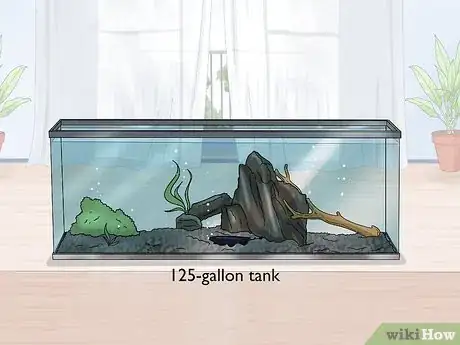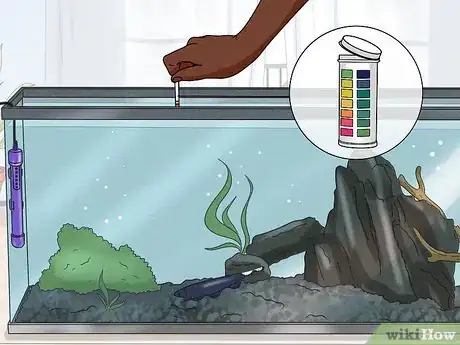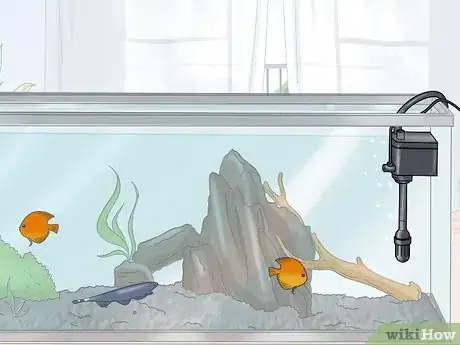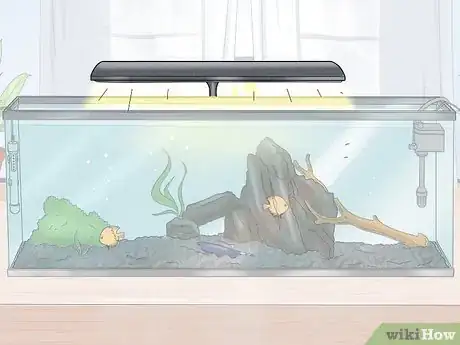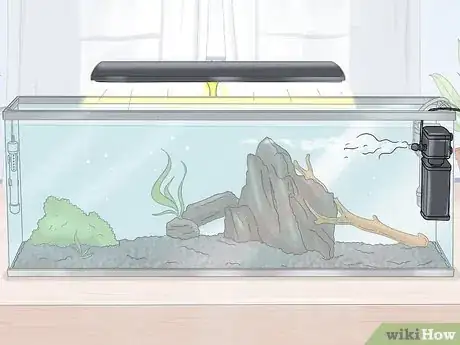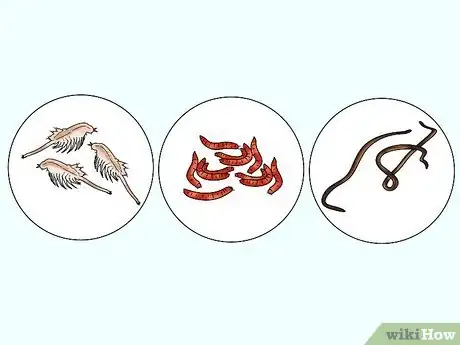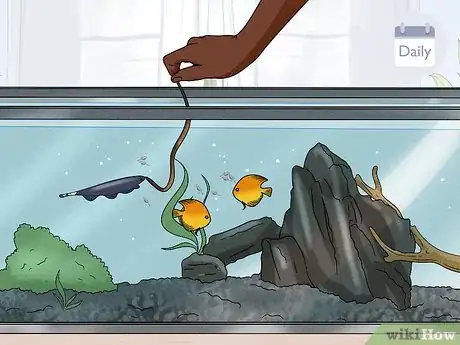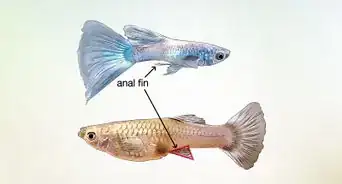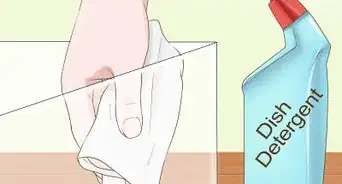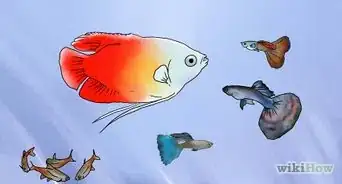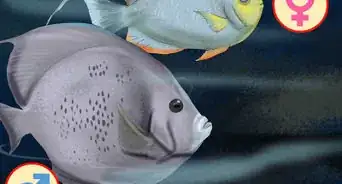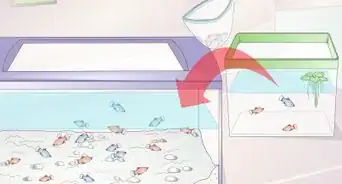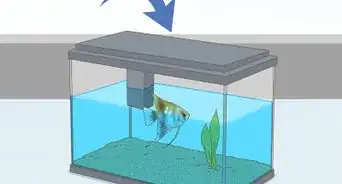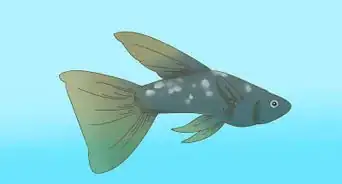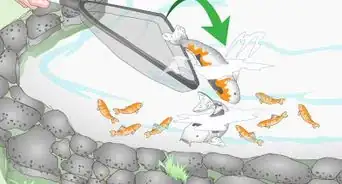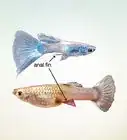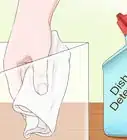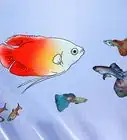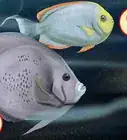X
wikiHow is a “wiki,” similar to Wikipedia, which means that many of our articles are co-written by multiple authors. To create this article, volunteer authors worked to edit and improve it over time.
This article has been viewed 26,397 times.
Learn more...
From the Amazon river comes a beautiful species of nocturnal fish. Growing up to 20 inches (49 cm), the black ghost knifefish has a spot in the heart of every fish keeper.
Steps
Part 1
Part 1 of 2:
Providing a Good Habitat
-
1Get a large enough tank. In the aquarium world, the knifefish is a large fish that needs a large tank. It is suggested to use a minimum of a 125-gallon tank for a single knifefish. You should do 30-50% water changes each week.
- The knifefish will spend most of its time in the bottom of the tank.
-
2Keep that water warm. The temperature your tank should be between 73 and 83 degrees Fahrenheit (22.8-27.8 degrees Celsius). You will need a tank thermometer to tell the water temperature inside the tank. A tank heater may be needed (depending on where you live) to get the water to an acceptable temperature range.
- If the water temperature is under 73 degrees Fahrenheit (22.8 Celsius), The fish could become sluggish or to lose its appetite.
Advertisement -
3Keep the pH between 6.0 and 8.0. To find the pH of the tank you will need pH strips.
-
4Use a fine gravel substrate. The substrate should be either sand or gravel to replicate the knifefish's natural environment. The substrate needs to be fairly soft to prevent harm to your fish.
-
5Provide many hiding places for your fish. Whether your decorations are plants, rocks, or wood, you should have many decorations to help your knifefish feel secure.
- Some owners have a clear tube in the tank so the owner can see the fish but the fish still feels secure.
-
6Choose a good tank mate. Choose a tank mate that is about the same size as your knifefish. These fish are peaceful to other fish that are the same size as them but, can become aggressive with other ghost knifefish. Make sure your tank mate isn't too small so it isn't mistaken for a meal.
-
7Use a water pump. Coming from the Amazon river, knifefish are used to moderate to strong water flows. A good water flow gives your fish mush needed exercise to keep it healthy.
-
8Use minimal lighting. Knifefish are nocturnal and used to hunting in the dark. During the day, use none or very little light. At night, use some low-level lighting so you can see the fish when its active.
-
9Have a strong filter. Make sure your filter can any and all waste and impurities. Knifefish are very sensitive to things in the water like ammonia, nitrites, and nitrates.
Advertisement
Part 2
Part 2 of 2:
Feeding
-
1Feed live food. In the wild, the knifefish eats insect larva, insects, worms and small fish so replicate this diet in your tank. To replicate the diet you can use foods such as:
- Brine shrimp
- Bloodworms
- Blackworms
-
2Feed daily. Once acclimated, your knifefish should come out for feeding. If you see that your fish is shy, feed it multiple times a day to help it get used to coming out. These fish are one of the few fish that you can hand feed. Hand-feeding requires a good bond between the fish and the owner so don't expect to be able to right away. When hand feeding, make sure that you don't have any soaps or perfumes on your hand because these are toxic to fish.
-
3Only feed it healthy fish/insects. Sickness can be transferred from anything from plants to feeder food. Make sure to properly quarantine anything that you add to your tank and to only buy your food from reputable sources that you trust. Knifefish are prone to skin flukes, parasitic infestations (protozoa, ichthyobodo, worms), bacterial infections, and bacterial diseases.
Advertisement
Community Q&A
-
QuestionCan I feed artemia to black ghost knife?
 Community AnswerYes. Feeding brine shrimp to a black ghost knife fish is perfectly okay. You can also try sinking carnivore pellets. You can feed blood worms, tubifex, brine shrimp, or any type of meaty foods, since black ghost knife fish are strictly carnivores.
Community AnswerYes. Feeding brine shrimp to a black ghost knife fish is perfectly okay. You can also try sinking carnivore pellets. You can feed blood worms, tubifex, brine shrimp, or any type of meaty foods, since black ghost knife fish are strictly carnivores.
Advertisement
Warnings
- Never use copper in a ghost knifefish tank.⧼thumbs_response⧽
- Don't have anything rough in your aquarium. Knifefish don't have scales and could get hurt on rough items.⧼thumbs_response⧽
Advertisement
About This Article
Advertisement
